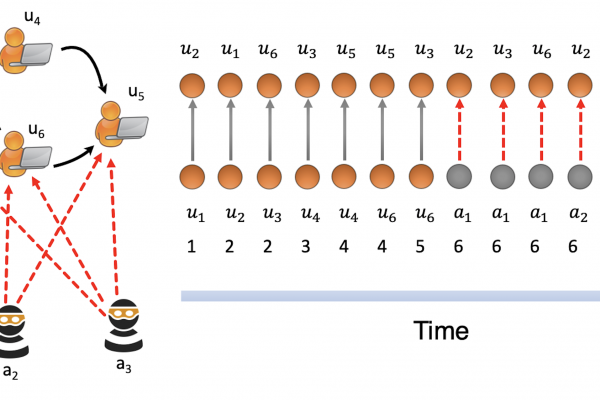Real-Time Streaming Anomaly Detection in Dynamic Graphs

Given a stream of graph edges from a dynamic graph, how can we assign anomaly scores to edges in an online manner, for the purpose of detecting unusual behavior, using constant time and memory? Existing approaches aim to detect individually surprising edges...
In this work, we propose MIDAS, which focuses on detecting microcluster anomalies, or suddenly arriving groups of suspiciously similar edges, such as lockstep behavior, including denial of service attacks in network traffic data. We further propose MIDAS-F, to solve the problem by which anomalies are incorporated into the algorithm’s internal states, creating a ‘poisoning’ effect which can allow future anomalies to slip through undetected. MIDAS-F introduces two modifications: 1) We modify the anomaly scoring function, aiming to reduce the ‘poisoning’ effect of newly arriving edges; 2) We introduce a conditional merge step, which updates the algorithm’s data structures after each time tick, but only if the anomaly score is below a threshold value, also to reduce the `poisoning’ effect. Experiments show that MIDAS-F has significantly higher accuracy than MIDAS. MIDAS has the following properties: (a) it detects microcluster anomalies while providing theoretical guarantees about its false positive probability; (b) it is online, thus processing each edge in constant time and constant memory, and also processes the data 130 to 929 times faster than state-of-the-art approaches; (c) it provides 41% to 55% higher accuracy (in terms of ROC-AUC) than state-of-the-art approaches.